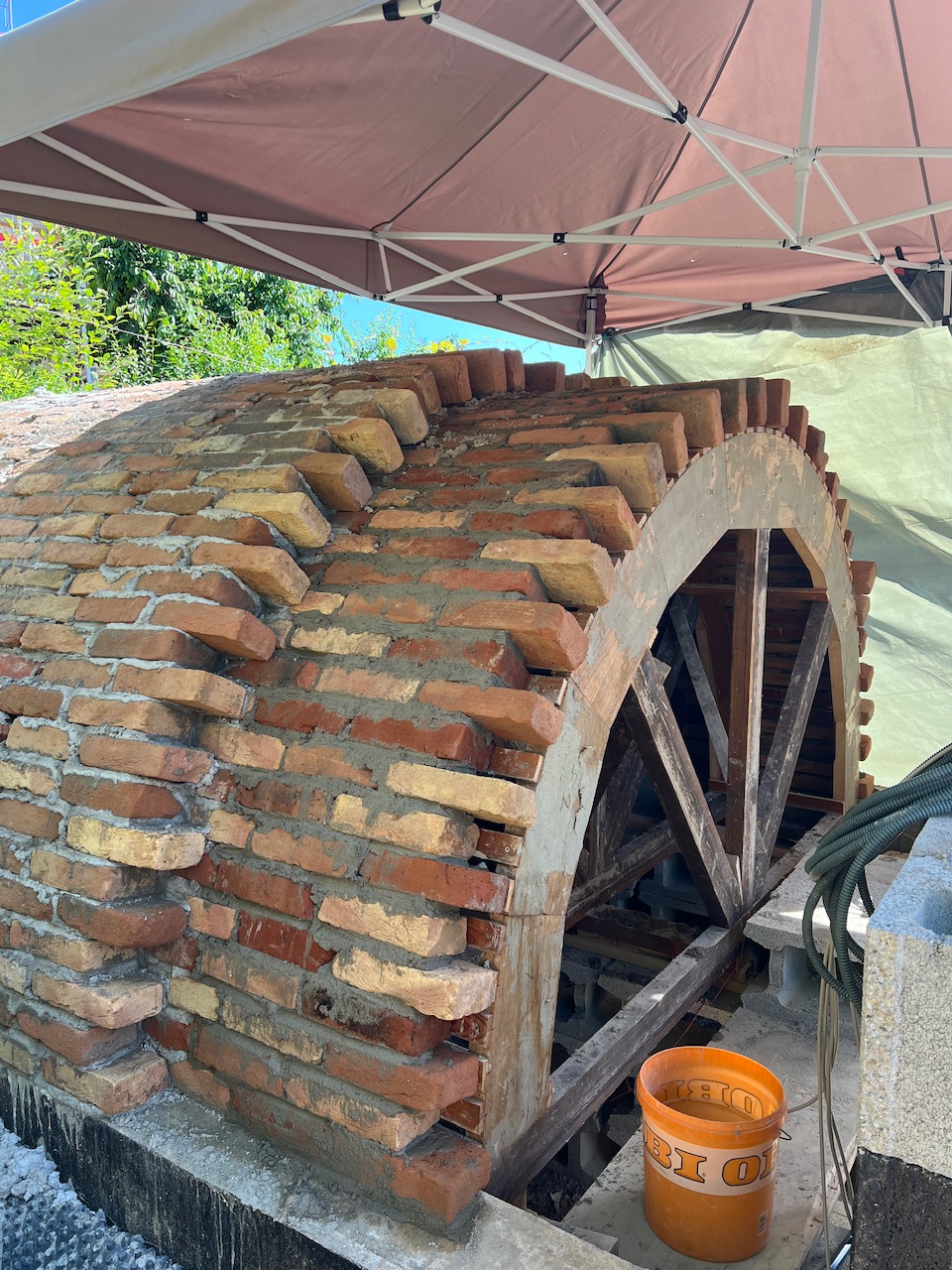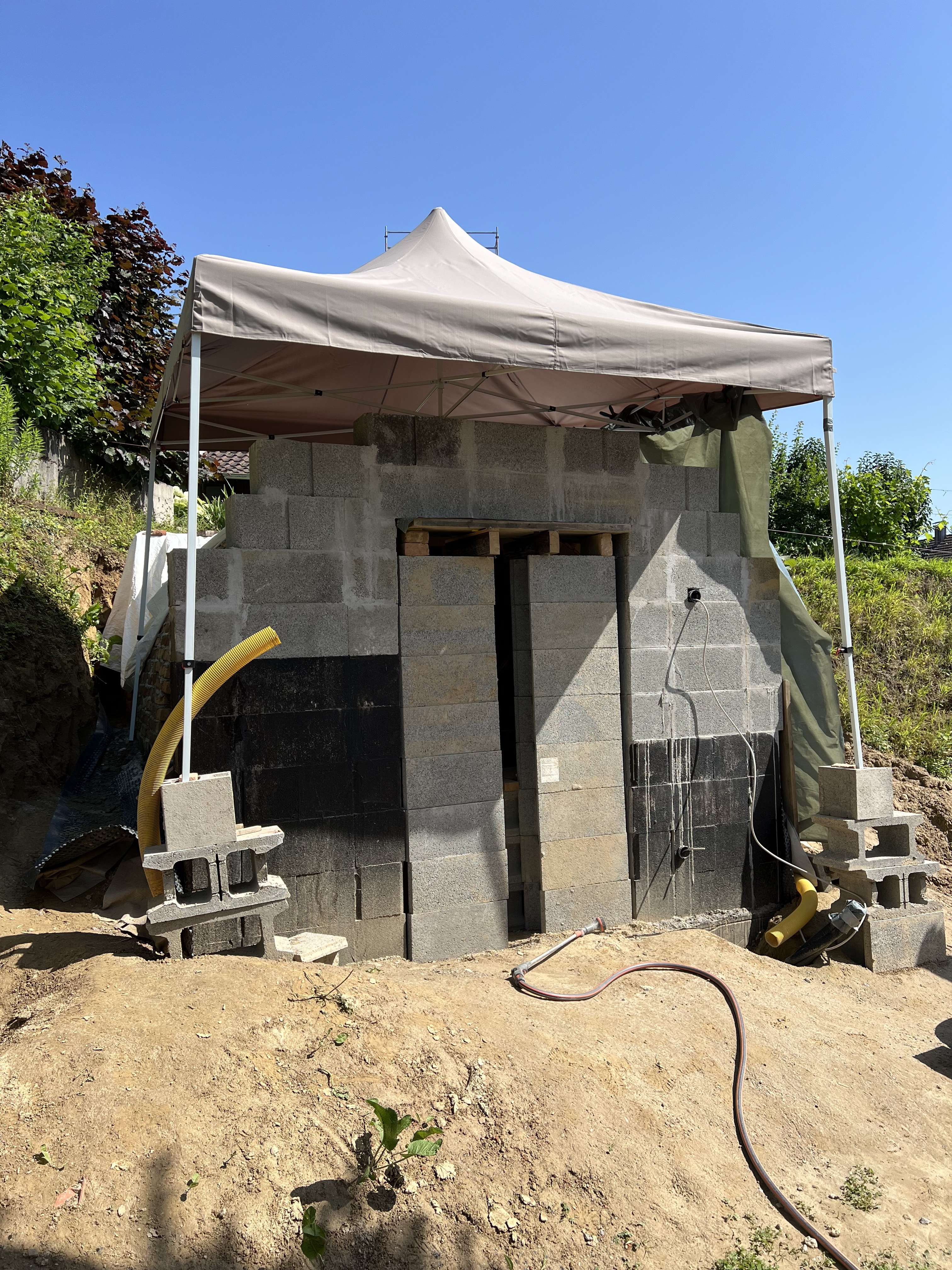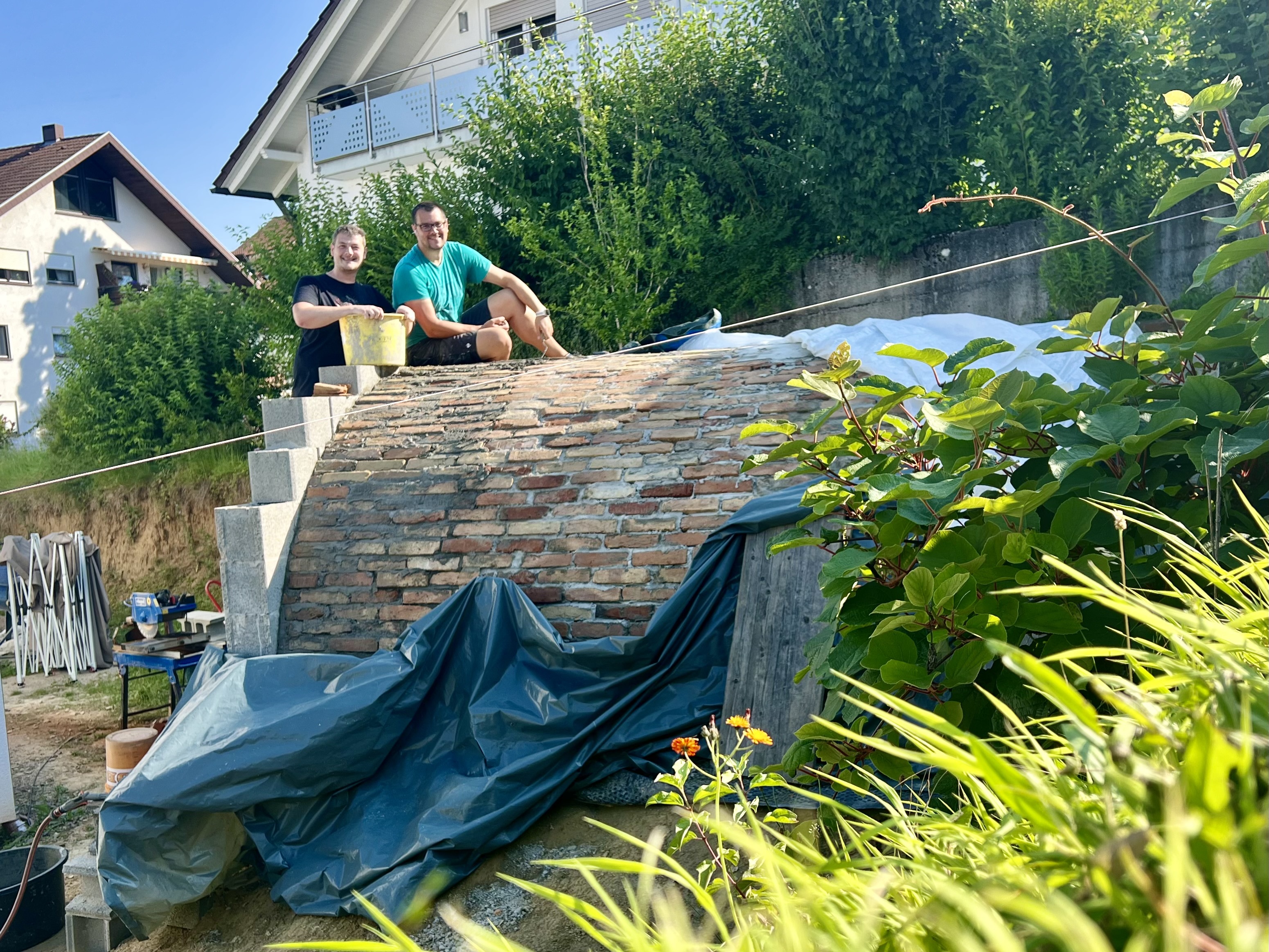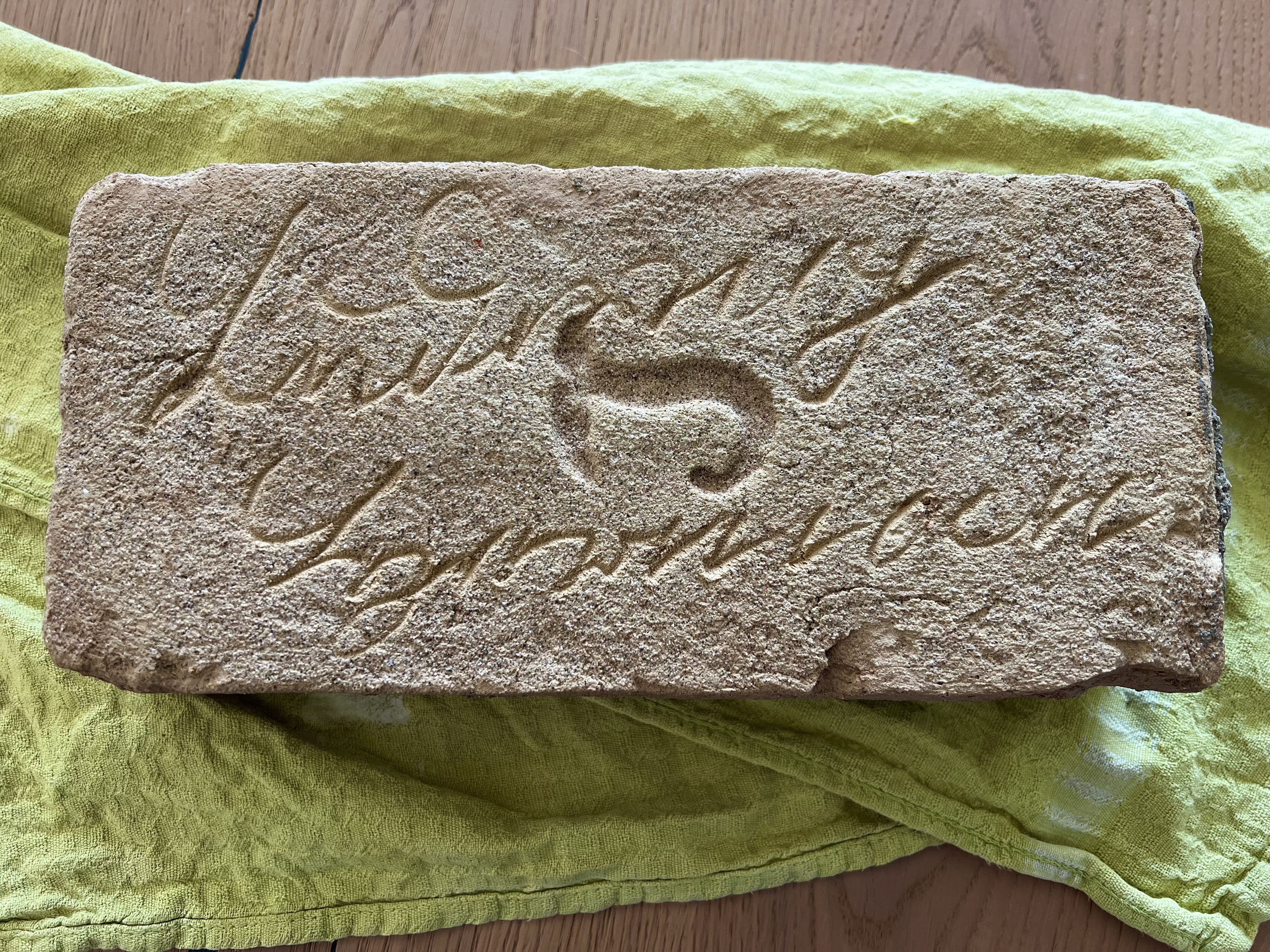Hi everyone
It’s been a while, I skipped a couple of weeks to get things going on our project!
Last time I wrote we had finished 3 slices of the roof. In the meantime, we finished the 4 next ones and completed the roof.

Eventually we were able to do a complete layer in one day, the second one on top the following day, and move the wooden structure the third day.
We held off laying the last slice to finish the front wall (and be eventually able to attach the ceiling to it), making a door lintel out of cinderblocks and reinforced concrete.

The suspense was high whether we would have enough bricks to finish the project and it turned out we had just 3 extra at the end!

One of the bricks revealed a handwritten signature which turns out to mean “Ludwig Herman”. We are still investigating who and when :)

Next, we will spend many hours cleaning the grout from the inside to free the bricks and make nice regular joints. Then we will insulate the outside with a pond liner and cover the root cellar under a thick layer of dirt.

See you soon!
Nice!
That looks really awesome! I’s hoping you’d not stopped posting, or given up on the project when you hadn’t posted in a while. What a fantastic curved ceiling!
Thank you so much!
the Monday when my “weekly” post was due, we had 2 additional layers done, but it was very same-y and not really worth posting, so I thought I’d hold off until we finish the whole thing.
Thanks for the updates! I’ve been really enjoying seeing this coming along. Looks amazing.
Dunno if you’re German or Austrian or something, but in Vienna there is a Ziegelmuseum whose curator studies the history of bricks, how they were made and used and whatnot. They have a long list of brick makers in Austria, when they were active and so on.
If you’re in another country, they could maybe help get you in contact with a historian local to you.
Could help you learn more about your mystery brick.
I’m in Germany yes, that’s a good idea, thank you. The person who sold us the bricks took them out of a building in a village near Karlsruhe, he might know more about the story of that place, we definitely plan on sending him pictures of our construction and we shall ask if he knows more.
This is pretty cool
Thank you! It will be nice to leave something tangible behind, and we learn many new skills along the way
Stunning.
Hope the mystery signed brick will go in along with your own plaque to future humans.
Most definitely!
Are the gaps between the bricks there for a reason? I would have thought the support for the arch would have come from them touching more then just the mortar.
We ordered this device to inject the mortar:

and some powdered iron oxide to give a darker tone to the mortar, we like it better with the color of the bricks. When all this arrives, we can continue
Oh yeah good question! That’s not staying like that. According to the building theory books I read a jointing in an arch can be anywhere between 5mm and 10mm of mortar inside (1/4’ to 1/2’) and up to 25mm outside (1 inch)
The empty space will be filled completely with mortar next week. It was a huge mess when laying the bricks vertically against the wooden formwork, we noticed how ugly it looked when moving it off after laying the two first slices.
The plan is to use some kind of piping bag and inject the mortar precisely in the gap, then smooth it uniformly. There are different shapes, we haven’t decided yet which one we will use:
